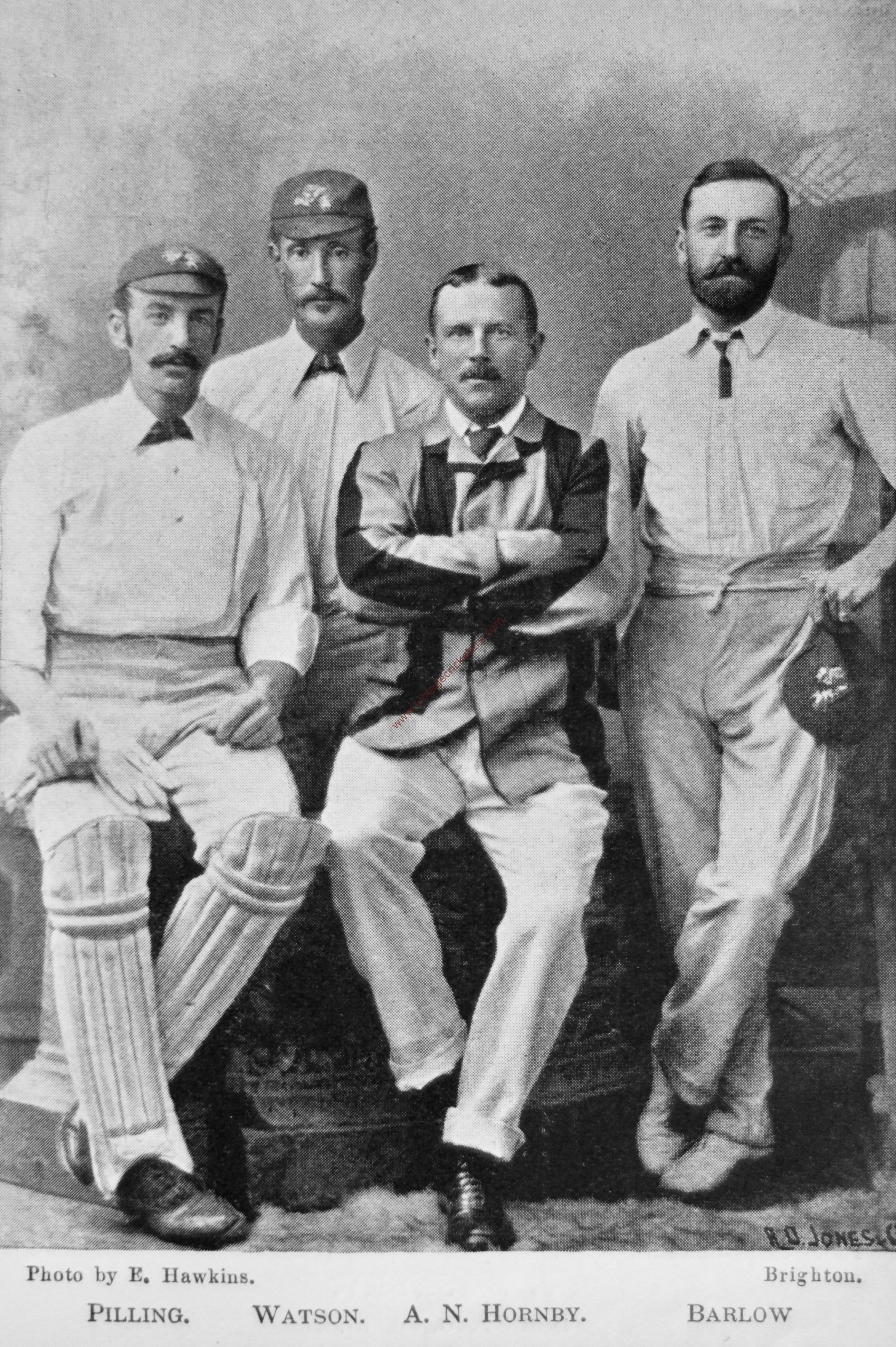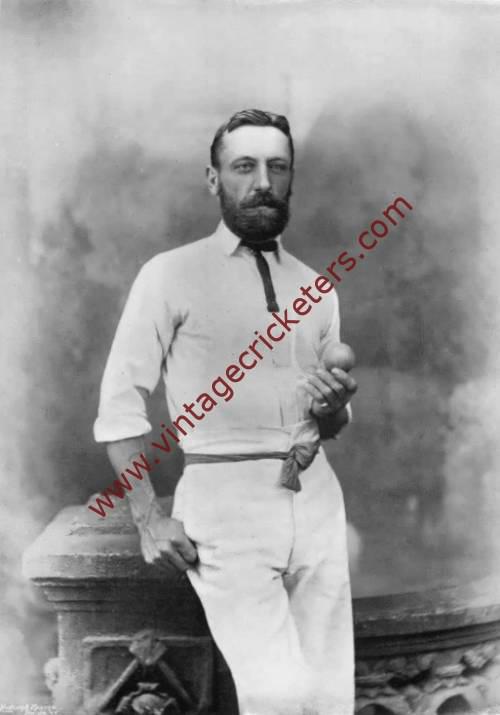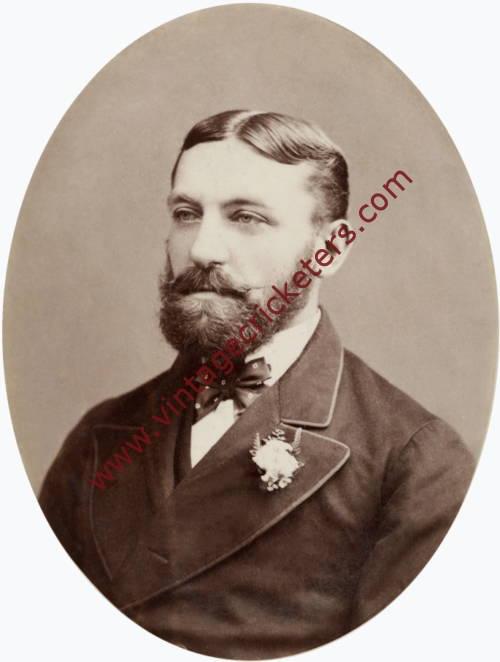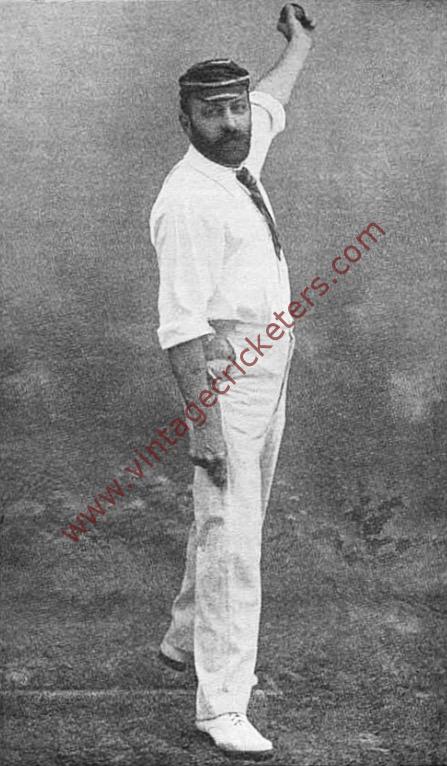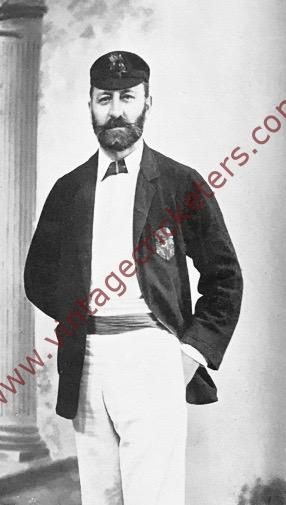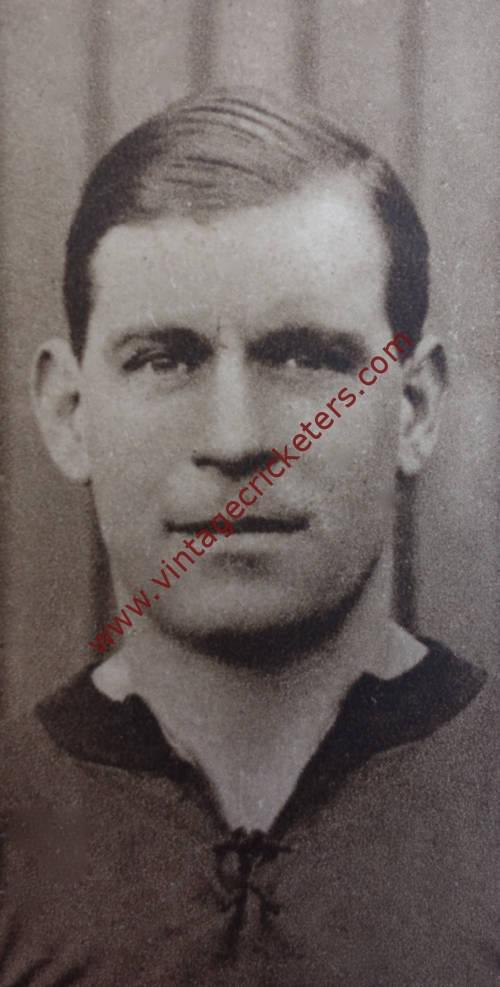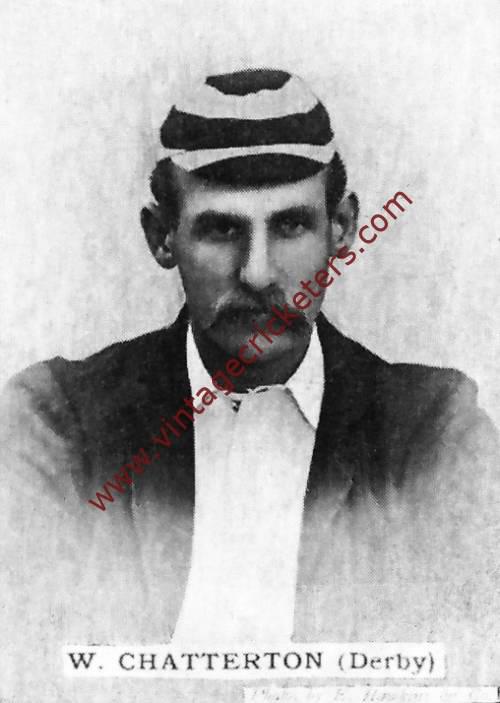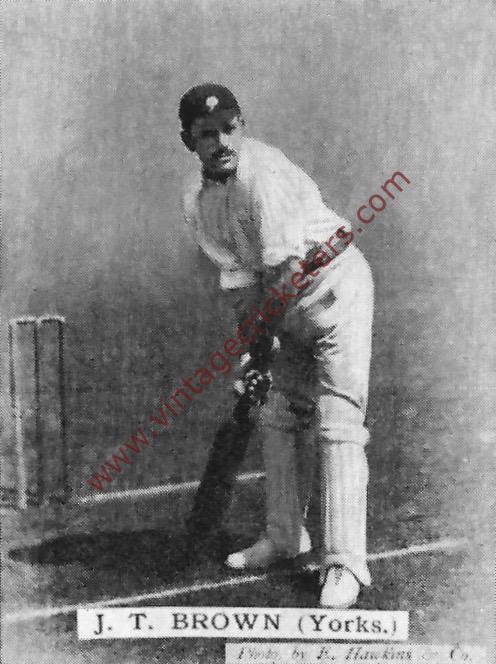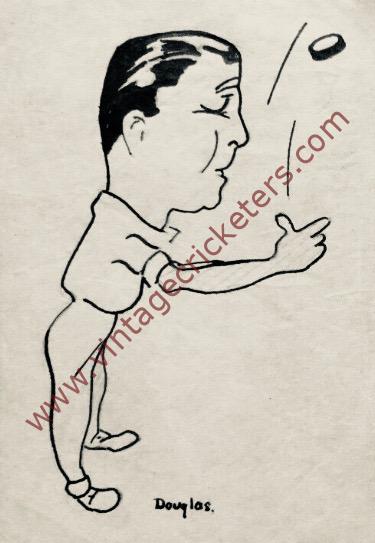Description
Barrow Bridge, Bolton, Lancashire born Dick Barlow first played for for Staveley Iron Works Cricket Club becoming a cricket professional with Farsley in Leeds in 1871, which was the year in which he first played for Lancashire. From 1873 to 1877 he was the professional for Saltaire in Bradford. Barlow played one match for Derbyshire in the 1875 season against a United North of England Eleven.
Barlow was 5 ft 8 inches tall and weighed approximately eleven stone, strong and sturdily built. Barlow was known for his defensive batting, which made it hard to dismiss him, and which earned him the nickname “Stonewaller”. On one occasion he scored no runs in a partnership of 45 with A.N. Hornby, who was dismissed for 44. He holds the world first class record for the lowest score by a batsman carrying his bat: against Nottinghamshire in 1882 he batted through the innings and made 5 not out in two hours when Lancashire were dismissed for 69. Barlow was also a good bowler with much variation. He carried his bat 11 times during his career.
According to a (possibly apocryphal) story related by Alan Gibson, Barlow was working as a railway porter when Hornby first encountered him. Hornby happened to see him batting against the bowling of the station master, and asked if he might have a bowl himself. “Ay, do,” was the reply. “He’s been in for a fortnight.”
Barlow is immortalised in one of the best-known pieces of cricket poetry, a poem called At Lord’s by Francis Thompson. In it Thompson remembers back watching Barlow and A N Hornby play for Lancashire through rose-tinted glasses. The first verse of the poem, which is repeated as the final verse is the best known:
It is little I repair to the matches of the Southron folk,
Though my own red roses there may blow;
It is little I repair to the matches of the Southron folk,
Though the red roses crest the caps, I know.
For the field is full of shades as I near a shadowy coast,
And a ghostly batsman plays to the bowling of a ghost,
And I look through my tears on a soundless-clapping host
As the run-stealers flicker to and fro,
To and fro:
Oh my Hornby and my Barlow long ago!
Barlow also developed into a very good slow-medium left-armer with immaculate length, clever variation, and a good eye for batsmen’s weaknesses. He took a wicket with his first ball in first class cricket and took four first class hat-tricks.
Barlow made his Test debut against Australia at Melbourne at the end of December 1881. He played seven times for England against Australia in England: in the match which gave rise to The Ashes at The Oval in 1882, at Lord’s, The Oval, and Old Trafford in 1884 and 1886. He made no big score in these matches, but his partnership with Allan Steel was the turning point of the game at Lord’s in 1884, and at Manchester, in 1886, his steadiness pulled England through when the Australian bowlers were in deadly form on a slightly crumbled wicket. Moreover, he took seven wickets for 44 runs in Australia’s second innings.
In 1884 at Trent Bridge, for the North of England against the Australians, Barlow played the game of his life. He scored not out 10 and 101 and took ten wickets, 4-6 and 6-42. It is on record that when the North started their second innings on a slow and nasty wicket, Fred Spofforth, Australia’s demon bowler said, “Give me the ball: they won’t get more than 60”. As events turned out they got 255, Barlow and Flowers putting on 158 runs together after five wickets had fallen for 53. At the end of that afternoon Barlow was a very happy man. Barlow paid three visits to Australia, going out with Alfred Shaw and Arthur Shrewsbury in 1881-82, with the Hon. Ivo Bligh in 1882-83, and again with Shaw and Shrewsbury in 1886-87. He played in every match of all three tours.
On the first of those tours, after scoring 75 at Sydney against New South Wales, a local wag presented Barlow with a commemorative belt. “I thought we had the champion sticker in Alec Bannerman,” said the wag, “but you’ve fairly won the belt.”
Barlow took part in the original Ashes match and is commemorated by the poem pasted on the side of The Ashes urn:
When Ivo goes back with the urn, the urn;
Studds, Steel, Read and Tylecote return, return;
The welkin will ring loud,
The great crowd will feel proud,
Seeing Barlow and Bates with the urn, the urn;
And the rest coming home with the urn.
In 17 Tests for England he averaged 22.73 with two half centuries and a high score of 62. He also claimed 34 Test wickets at 22.55 a piece with a best of 7-40. In 351 first class matches, he scored 11,217 runs at a 20.61 average, with 4 hundreds and 39 half centuries, and a highest score of 117. His best bowling performance was 9-39 and he took 10 wickets in a match 14 times, recording 66 five wicket innings. He also took 268 catches.
After he retired in 1891, he continued playing club cricket well into his sixties as well as being a capable umpire who stood in one Test in 1899. Near the end of his life Barlow was quoted in the Manchester Guardian: “I don’t think any cricketer has enjoyed his cricketing career better than I have done, and if I had my time to come over again I should certainly be what I have been all my life – a professional cricketer”. He died in July 1919 aged 68. On his tombstone is inscribed ‘bowled at last’.
NB in the photograph, Barlow appears with Lancashire team mates (l-r) wicket-keeper Dick Pilling, Alec Watson and Albert “Monkey” Hornby

